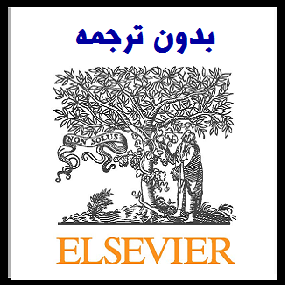مقاله انگلیسی تفاوت قیمت گذاری حسابرسی بین حسابرسی داوطلبانه و اجباری (2018 امرالد)


| عنوان فارسی مقاله | تفاوت قیمت گذاری حسابرسی بین حسابرسی داوطلبانه و اجباری |
| عنوان انگلیسی مقاله | Differences in audit pricing between voluntary and mandatory audits |
| فهرست مطالب | Abstract ۱ Introduction ۲ Theoretical framework ۳ Empirical study ۴ Results ۵ Discussion of results ۶ Conclusions References |
| نمونه مقاله انگلیسی | Abstract
Purpose – Despite the extensive research on the determinants of audit pricing in both public and private settings, there is a lack of research about the differences in audit fees between voluntary audits and mandatory audits. The purpose of this paper is to address this gap. Design/methodology/approach – First, a theoretical framework is developed to justify differences in audit pricing between voluntary and mandatory audits. Next, using a sample of Spanish private small and medium enterprises (SMEs) running from 2009 to 2014, the authors empirically test whether the fees charged for voluntary audits differ from those charged for mandatory ones. The authors also examine whether the premium observed among large auditors is persistent in the SME setting, and whether this premium differs depending on whether the audits are voluntary or mandatory. Findings – Although a preliminary analysis does not report significant differences in pricing between voluntary and mandatory audits, additional analyses using samples restricted by company size show that voluntary audits are charged with a premium. The authors observe a premium related to large auditors, and find no significant differences in the audit pricing of Big 4 auditors depending on the mandatory/ voluntary nature of the audit, but the premium associated with Middle-Tier auditors disappears in the voluntary setting. Originality/value – This paper contributes to the previous literature by introducing the examination of differences in audit pricing between voluntary and mandatory audits. As far as the authors know, this is the first study to examine the differences in audit pricing between voluntary and mandatory audits. It also elaborates on studies on audit pricing in SMEs. Introduction There is an increasing interest in the audit pricing process in the private setting and among small companies, justified by the differences between public and private firms. This can help to shed light on the audit pricing process, by examining the impact that those differences have on audit fees (Niemi, 2002; Chaney et al., 2004; Clatworthy and Peel, 2007; Hope et al., 2012), and by disentangling potential effects that cannot be separated in the public setting (Peel and Roberts, 2003; Hope et al., 2012). Nevertheless, there is a lack of research on the audit fees of voluntary audits. Although recent papers have examined the determinants of audit fees in small companies (Peel and Roberts, 2003; Sundgren and Svanström, 2013), they do not analyse whether voluntary audits have a differential effect on audit pricing when compared to mandatory ones, because either they only examine small companies which are voluntarily audited (Peel and Roberts, 2003) or the setting examined requires a mandatory audit for virtually all companies, including the smallest of them (Hope et al., 2012; Sundgren and Svanström, 2013). However, there are reasons to expect audit fees to be affected by whether the audit is voluntary or mandatory. First, previous research on voluntary audits shows that there is a demand for them (Collis et al., 2004; Niemi et al., 2012; Dedman et al., 2013), and papers on the effects of voluntary audits show that these audits have positive effects on the companies that are voluntarily audited (Allee and Yohn, 2009; Lennox and Pittman, 2011; Kim et al., 2011); voluntary audits may be more highly valued than mandatory audits, and thus auditors would charge higher fees for them. Moreover, there is empirical evidence of a fee premium linked to high-quality auditors (Hay et al., 2006; Clatworthy et al., 2009), who are used to signal the management’s commitment to high-quality information (Sundgren and Svanström, 2013). Therefore, as the signalling effect is valued by the stakeholders, and previous literature states that credence goods, such as audits, use pricing to signal quality (Knechel et al., 2008), we can expect an audit fee premium associated with voluntary audits, similar to the one observed for the high-quality auditors, as long as companies that voluntarily purchase an audit want to signal their commitment with accounting quality. Furthermore, as companies which undergo mandatory auditing may consider audits a legal obligation and a costly burden—especially countries such as Spain, without a long tradition of the revision of financial statements—they may look for auditors that charge lower audit fees. Therefore, the aim of this paper is to test whether mandatory and voluntary audits have a different pricing. Comparing voluntarily audited small and medium enterprises (SMEs) with those whose auditing is mandatory, we examine whether the pricing for voluntary audits is different to that of mandatory audits. |
| نمونه ترجمه کامپیوتری | چکیده
هدف – با وجود تحقیقات گسترده در مورد عوامل تعیین قیمت گذاری ممیزی در هر دو حالت عمومی و خصوصی، کمبود تحقیق در مورد تفاوت در هزینه های ممیزی بین ممیزی های داوطلبانه و ممیزی اجباری وجود دارد. هدف این مقاله این است که این شکاف را مورد توجه قرار دهیم. طراحی / روش شناسی / رویکرد – ابتدا، یک چارچوب نظری برای توجیه تفاوت قیمت گذاری ممیزی بین ممیزی داوطلبانه و اجباری ایجاد شده است. سپس، با استفاده از نمونه ای از خصوصیات کوچک و متوسط اسپانیایی (SME) که از سال 2009 تا 2014 اجرا می شود، نویسندگان به طور تجربی تست می کنند که آیا هزینه های متهمان برای ممیزی های داوطلبانه متفاوت از آنهایی است که برای موارد اجباری مورد نیاز است. نویسندگان همچنین بررسی می کنند که آیا حق بیمه بین حسابرسان بزرگ در تنظیم SME وجود دارد یا خیر، و این که آیا این حق بیمه متفاوت است یا خیر، بسته به این که آیا ممیزی داوطلبانه یا اجباری است یا خیر. یافته ها – اگر چه تجزیه و تحلیل اولیه تفاوت های قابل توجهی در قیمت گذاری بین ممیزی های داوطلبانه و اجباری گزارش نمی کند، تجزیه و تحلیل های اضافی با استفاده از نمونه های محدود شده توسط اندازه شرکت نشان می دهد که ممیزی های داوطلبانه با حق بیمه محاسبه می شوند. نویسندگان حق بیمه مربوط به حسابرسان بزرگ را مشاهده می کنند و تفاوت های قابل توجهی در قیمت گذاری حسابرسی حسابرسان 4 بزرگ براساس ماهیت اجباری / داوطلبانه ممیزی مشاهده نمی کنند، اما حق بیمه مربوط به حسابرسان میان رده در فضای داوطلبانه از بین می رود. اصالت / ارزش – این مقاله به ادبیات قبلی کمک می کند با ارائه بررسی تفاوت در قیمت گذاری حسابرسی بین ممیزی داوطلبانه و اجباری. همانطور که نویسندگان می دانند، این اولین مطالعه برای بررسی تفاوت ها در قیمت گذاری ممیزی بین ممیزی داوطلبانه و اجباری است. همچنین در مورد مطالعات در مورد قیمت گذاری حسابرسی در SMEs توضیح داده شده است. توجه؛ (این ترجمه توسط نرم افزار انجام شده و ویرایش نشده است و احتمال وجود اشتباه در آن وجود دارد. در صورت ثبت سفارش، ترجمه توسط مترجمین مجرب انجام خواهد شد. برای مشاهده نمونه ترجمه های تخصصی و اخیر مترجمین جهت اطمینان از کیفیت ترجمه، اینجا کلیک نمایید.) |
| سال انتشار | 2018 |
| ناشر | امرالد |
| مجله | Academia Revista Latinoamericana de Administración |
| کلمات کلیدی | حسابرسی داوطلبانه، هزینه های حسابرسی، حسابرسان بزرگ ۴، حسابرسان میان رده، SMEs |
| کلمات کلیدی انگلیسی |
Voluntary audit, Audit fees, Big 4 premium, Middle-Tier auditors, SMEs |
| صفحات مقاله انگلیسی | 25 |
| مناسب برای رشته | حسابداری، مدیریت |
| مناسب برای گرایش | حسابرسی، مدیریت کسب و کار |
| توضحیات | این مقاله انگلیسی جدید بوده و تا کنون ترجمه نشده است. جهت ثبت سفارش ترجمه از لینکهای زیر استفاده نمایید. |
| دانلود مقاله انگلیسی | ○ دانلود رایگان مقاله انگلیسی با فرمت pdf (کلیک کنید) |
| سفارش ترجمه فارسی | ○ سفارش انجام ترجمه و تایپ این مقاله (کلیک کنید) |
| سایر مقالات این رشته | ○ مشاهده سایر مقالات رشته حسابداری (کلیک کنید) |




